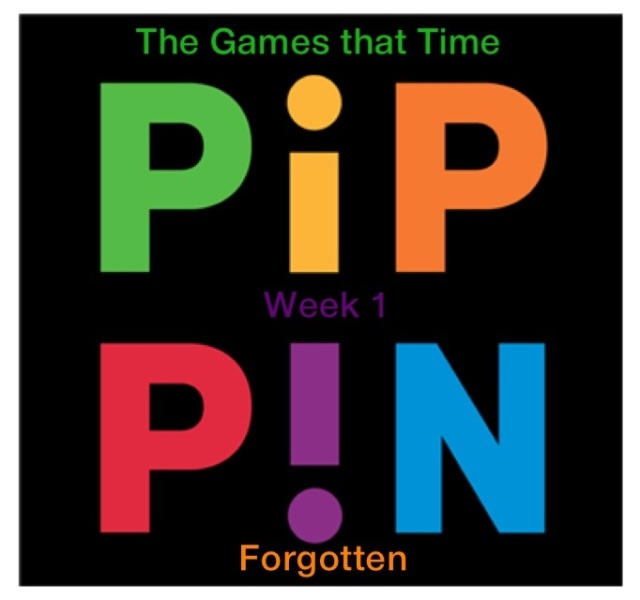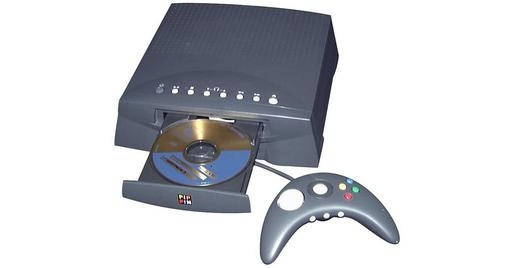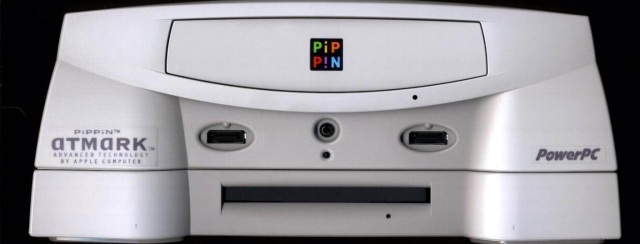What’s up GameOn readers how’s everyone? We we here at GameOnRadio! Are going to start something new this week and every week, with a segment we like to call “The Games That Time Forgot”. We will give you a brief history on some rare, and almost virtually unknown systems, games, and accessories many of us may have never heard of or simply forgot. So without further ado, here is the 1st entry in the series. Apple Bandai Pippin!
Where do I begin?
Lets start with the system specs. As you may not know, the Apple Bandai Pippin was apart of the fifth-generation era of games (also known as the 32 bit era, the 64 bit era or the 3D era) for more info this era, you can follow this link on Wikipedia History of video game consoles (fifth generation). So in line with this era, it should share many components with the more popular systems of the time as well as the original MAC OS. Here are the specs…
Media: CD-ROM
CPU: PowerPC 603 RISC (66 MHz)
Storage capacity: 6 MB combined system and video memory,128kb NVRAM
Graphics: “tacos” (VGA/16-bit)
Controller input: “AppleJack”: control pad with embedded trackball
Connectivity: 14.4, 28.8, 33.6 kbit/s modems
Online services: PSINet/@World
See, pretty basic 16-bit setup with a Few MAC (at the time) specs sprinkled in there.
Now here is a little background about the system so you can see how it started…
The Apple Pippin started out as an open multimedia technology platform from Apple and marketed as the PiPP!N. According to Apple, Pippin was directed at the home market as “an integral part of the consumer AV stereo and TV environment. (You can see that by this commercial only broadcasted in Japan, and don’t worry it’s so terrible, you can understand it.)
Now the Pippin is heavily based on the Apple Macintosh mainly the Mac OS “Classic”. Shortly after it’s creation, Apple licensed the Pippin to Bandai Company Ltd. Bandai in-turn, developed a version called the ATMARK and @WORLD models, and focused them on the gaming and entertainment for sale in Japan and the United States.
The Apple Bandai was also one of the 1st gaming systems in the modern era to have native Internet connectivity. Originally, Bandai never wanted to create a gaming system that could connect and use the internet. However, Apple and Bandai received feedback from customers, during a trade show where they show cased the Pippin that they were looking for a system that can connect to the Internet.
Although things seemed great in the beginning, they quickly began sour. The 1st and most obvious thing which doomed it’s fate was the price. Coming in at a whopping US $599.99 price tag (64,800 yen), the system was way too expensive for the average gamer and most staunch gaming enthusiast at the time. (Of course the Neo Geo was just as much, but because of it’s arcade presence and great library of games, not having a home Neo Geo was not that big of deal especially with arcades still being relevant at the time). The systems went on sake in Japan on March 28th, 1995 and in the US on September 1st, 1995 (eight whole days before the massively popular Sony Playstation was released in the US).
In Japan the system shipped with a dial-up modem and four bundled titles. The American @World version came with a six-month unlimited Internet account from PSINet at a cost of US$24.95 per month.
The second thing that killed it’s vibe was the release of the Sony Playstation (Dec “94” Japan & Sept “95” US). The Playstation came from a failed Nintendo and Sony relationship which blossomed into a complete video gaming Monster changing the landscape of gaming.
Another failure was it’s second distribution and production agreement with a company by the name of Katz Media based in Norway. Katz Media signed their deal with apple in late Spring of “96”. Now Katz was a video media company and decided to make two versions of the system. One strictly for running multimedia CD-ROM software (movies, music, interactive media), and a premium version with Internet access. Both were to be marketed and sold in Europe. In the end they only ended up selling one version of the system called the Katz Media KMP 2000 with two different configurations. One with or without an external 50-pin Centronics SCSI (SCSI) interface on the back the system. Also the system was sold as a set-top-box for cable tv and such. Because of this configuration, the Katz Media KMP 2000 is the rarest of the systems and extremely hard to find.
They even sold it in Canada as a way to use their cable system for Internet use in the home. To us some of these if not all of these Internet features are standard to use on our various gaming devices as well as the cable set-top-box issue we are seeing the the announcement of the XBoxOne. So in a sense, you could say these features were ahead of their time, and the average gamer was just not ready for it. It came and a good time technically speaking but bad time in gaming history for overall gaming enjoyment. It just did too much and need resources that at the time the average person could not afford or had access to like the Internet.
Most people don’t know that at the time of it’s inception Steve Jobs was not with Apple (I think he was still with Pixar before he sold it to Disney). When Mr. Jobs returned to apple in mid “97” he stopped all production and distribution of the Pippin and any other “Mac clones” because it was costing apple millions of dollars with hardly any returns. Bandai made a little under 100,000 Pippins, but reportedly sold 42,000 systems before discontinuing. Production of the system was so limited, there were more keyboard and modem accessories produced than actual systems. Also because of this discontinuing, Katz Media went into bankruptcy because it entered contracts with other companies to ship and sell the products, but could not deliver because of Mr. Jobs decision.
Another failure was hardly no advertising from Apple! After Apple inked a deal with Bandai, they virtually did nothing, leaving all advertising done by licensees. Also Bandai and Katz Media were not allowed to use the term “computer” when marketing the Pippin systems, so that the systems would not be confused with Apple’s own Macintosh product line. Another issue was that there was hardly any ready to use software available even though Apple tried to entice 3rd party publishers (especially with being content and region restriction free with the ability to have the games scalable to play on future Apple systems) most were signed on or say the technically more powerful PS, N64,and Saturn as more economically viable the last two are brand names that gamers recognized and grew up with.
In May 2006, the Pippin placed 22nd in PC World Magazine’s list of the The 25 Worst Tech Products of All Time
I like I stated above, the system in terms of tech was a head of it’s time, but the other systems available were just to damn good and the games looked and played better. I think Apple could come back into the gaming arena but to be honest, they are making a killing with iPad and we might one day have an “iBox” (who knows?)
Now on to the games. There weren’t many, and not to mention they weren’t that good but for a few and that’s not saying much below I’ll provide a list of known games and I’m sure YouTube has videos of them…
Because I can’t find a complete list of Japanese titles I’ll only list the US ones. In the US only 18 titles were sold separately with 6 coming packed in when you purchased the system (damn I wish six games came with the system ex of today free of charge when purchased) giving a total of 24 titles. *Note* Upgrades to the Pippin Browser were released as a new CD over time, as was an update to TV Works (a text and drawing program) which would make the total 24.
CineNoir
Compton’s Interactive Encyclopedia
Cool Crafts
Exotic Sushi
Gus Goes to Cyberopolis
Gus Goes to the Kooky Carnival in search of Rant
Home Improvement 1-2-3
Katz Pippin Demo CD 2.0
Movieoke
Mr. Potato Head Saves Veggie Valley
Navigator
Pegasus Prime
Power Rangers Zeo Vs. The Machine Empire
Playskool Puzzles
Play-Doh Creations
Racing Days
Super Marathon
Terror T.R.A.X.
TV Works
Accessories
There were nine accessories plus a printer produced for the system. Checkout the list below…
AppleJack controller
AppleJack Wireless (IR) controller
Pippin keyboard with drawing tablet
Pippin Modems (14.4, 28.8, 33.6 kbit/s)
Pippin memory (2, 4, 8, 16 MB)
Pippin Floppy Dock
Pippin MO 256 MB optical disk
Pippin ADB adapter (for connecting Macintosh devices to Pippin)
Pippin to Macintosh (ADB) adapter (for connecting Pippin devices to Macintosh)
Pippin can use the Apple Color StyleWriter 2400 and 2500 series through its serial port.
Log on next week for more “Games that Time Forgotten” with the NEC Corporation’s successor to the TurboGrafx-16
D. Jones


